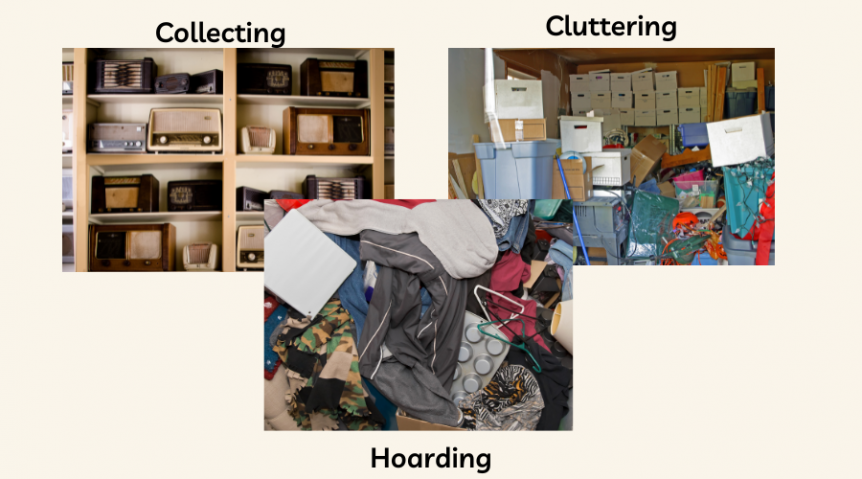Hoarding owns the hoarder. The owner of excessive items is unable to sever the tie with the objects he or she collects.
Cluttering may be a marker of a hoarding disorder, but an individual can accumulate numerous, somewhat related objects for several reasons.
Collecting is an organized display of items appreciated by the collector and may serve as a recreational hobby.
Collecting vs Hoarding
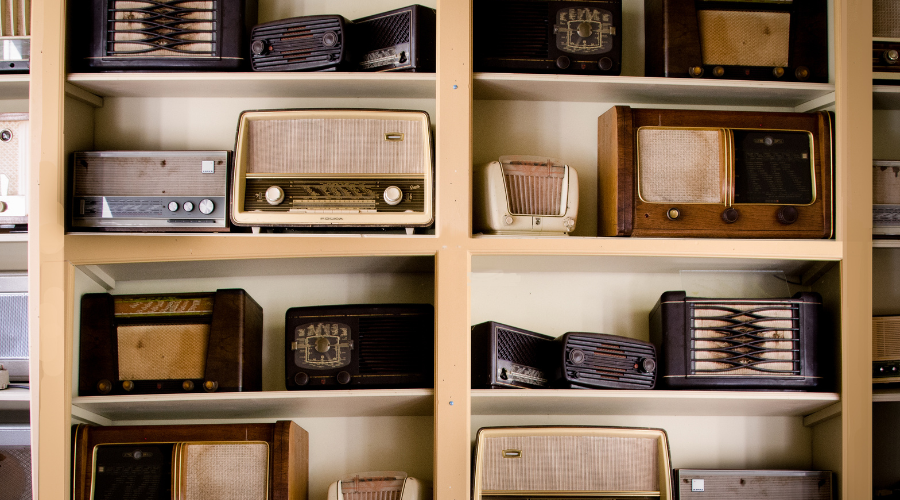
Collecting is the enjoyment of possessing beautiful, rare items for your own pleasure and enjoyment.
Collecting is the enjoyment of possessing and preserving an object for its aesthetic or historical value. Collectors are often motivated by their appreciation of elegance, beauty, exclusivity, and status.
Hoarding is a progressive, mental illness that forces people to save everything. They can’t get rid of their items, no matter how old, dirty or broken they are. Once an item comes into the house, the person with hoarding disorder soon realizes it is worth keeping it in case it ever becomes useful in an unforeseen situation. For example, when buying a new car, they gather all the keys for their old cars so that one day they might need them again. Hoarders feel compelled to keep everything and will often describe their home as a place filled with “treasures” that someone else would find too disgusting or worthless to keep.”
Clutter vs Hoarding
Clutter and hoarding have become household buzzwords. Everyone has their own definition of what constitutes clutter and hoarding. For the purpose of this article, we define clutter as a large collection of possessions with no immediate use, in which things are piled up and spread haphazardly throughout an area; and we define hoarding as having more possessions than one can manage or care for, such that one’s living spaces are unworkable and possibly life-threatening.
Hoarding is also known as extreme clutter, it’s a mental health disorder that affects people of all ages and can be severe, moderate, or mild. Hoarding is characterized by the inability to discard possessions, regardless of value. People with hoarding disorder keep things that others may view as trash, including things like animals, dirty items, and rotting food. These items often have no use and are unsanitary and hazardous. A person who has this disorder will frequently experience problems at work, school, home, and socially due to their inability to manage their environment.
Too much clutter can be overwhelming and hard to get in control of, but it is possible. The key is to develop a plan, set goals, and stick to them. Getting help may also be necessary at first.
Factors to distinguish Cluttering, Collecting, and Hoarding
Hoarding, cluttering, and collecting differ markedly. Each of these three descriptors affects the homeowner in very specific ways. Let’s take a look at the differences between the three scenarios:
Objects Gathered
Hoarding is the practice of acquiring and keeping a large number of possessions that have little or no value and may have never been used. It is characterized by excessive accumulation of items and a persistent inability to discard those items, regardless of their usefulness or the amount of space they occupy. The presence of animals can also be quite noticeable in hoarding cases, especially when animal feces accumulate without cleanup.
An individual suffering from hoarding disorder will gather several mismatched items and store them in the home for infinity, or until a concerned member of the family or neighbor gets help for the hoarder. The hoarder will not let go of a single item, whether it is a series of used ketchup packets from decades ago or several newly purchased ladles. In fact, the hoarder will have stocked away 40 ladles within the recesses of the home. There is no system in place that dictates what the hoarder will gather. Fast food receipts from five years ago and empty plastic cups are fair game to hoard.
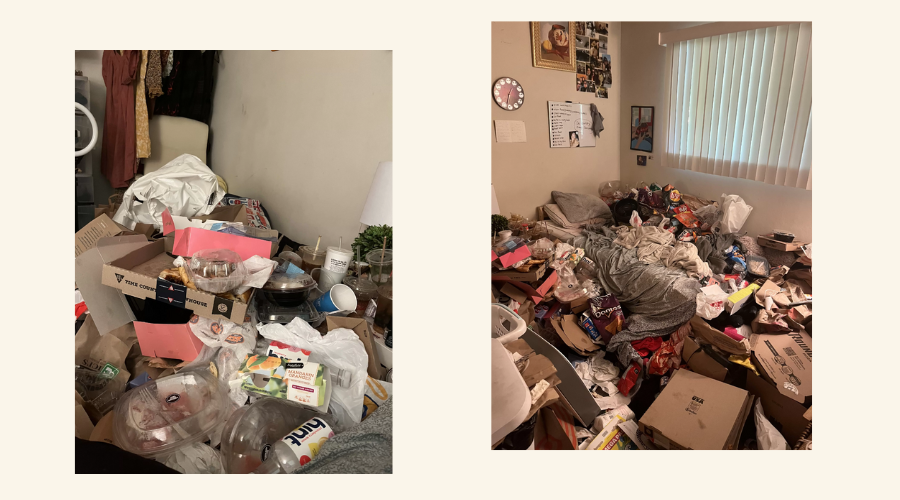
Hoarding is a pattern of behavior involving the excessive acquisition of and inability to discard large quantities of possessions that cover up or clutter active living areas in the home.
Signs of hoarding include, but are not limited to: large quantities of old newspapers, junk mail, magazines, or cardboard boxes; clutter, garbage and debris; potential safety hazards such as blocked exits, slippery floors, soiled surfaces or the presence of pests (rodents or insects); the inability to use all rooms in a home because of clutter and the presence of animals.
In cluttering, a person will accumulate items that have personal meaning. The objects are gathered and stored in a non-thematic fashion. Generally, any items are kept in the home’s basement or attic without much regard to the organization.
A collector will gather specific items that revolve around a theme, like stamp collections, wine collections or baseball card collections. These valued possessions are carefully displayed inside the home.
Impact on the Home
Someone with a hoarding disorder allows the accumulation of miscellaneous hoarded items to take over the home. The hallways are littered with garbage; the home’s exits are barely accessible due to the excess rubbish; stairs are unreachable; and, rooms overflow with collected trash. The home of an individual with a hoarding disorder is immersed in bacteria and is dangerously unsanitary. Imagine canine waste contained in a jar or cat litter piled up in the corners of several rooms. A person with hoarding issues retains harmful items that eventually create a toxic environment.
People with clutter in their homes typically store accumulated items in the basement or attic, where the objects have little impact on everyday household functioning. Hallways are litter-free and easily accessible, as are exits and entrances. The rooms in the home are used as intended, meaning the bathtub is not overflowing with accumulated paper bags. Those with clutter in the home easily straighten out the mess when necessary, such as when guests arrive.
Collectors beam with joy at the tasteful display of their collections, whether they be porcelain figurines, train models, glass blown vases or unique paperweights. The home’s aesthetic appearance is enhanced by the presence of exquisitely presented collected items. A homeowner takes great pride in showing off the collections. The home is not haphazardly overtaken by the collector’s exhibits.
Psychological Disparities
Hoarding is a chronic psychological disorder. Approximately two to five percent of the population has been diagnosed with a hoarding disorder. Researchers refer to psychological parallels between hoarding disorder and obsessive-compulsive disorder (OCD), ADHD, or dementia.
The individual suffering from a hoarding disorder experiences psychological distress at the mere thought of parting with an item hoarded within the home. As a way to avoid experiencing stress, the hoarder does not let go of a single hoarded item. Social isolation plagues many with a hoarding disorder. Relationships are strained due to conflicts with neighbors and family members. Financial worries become a stark reality when the individual excessively spends money on irrelevant objects.
Hoarding is a complex problem with many negative consequences. It can lead to serious health problems and create dangerous living conditions for the hoarder, family members, and neighbors. Children who grow up in hoarding situations are at high risk for health problems, social and emotional difficulties as well as educational underachievement.
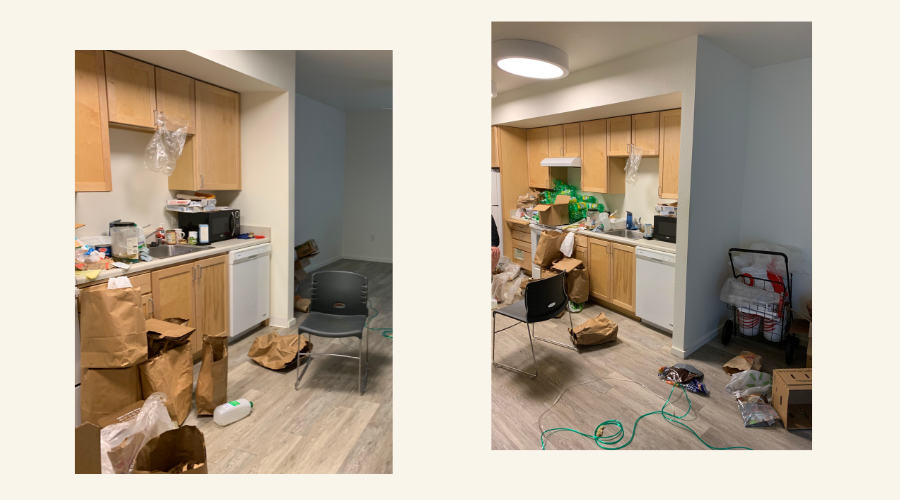
People can be trapped in their homes due to the hazardous conditions that hoarding creates.
Cluttering is generally considered normal. The personal items gathered invoke pleasurable emotions, like joy or pride. Varying degrees of clutter exist. Those who step into a cluttered home may feel overwhelmed or simply comfortable with the mess. What one person sees as a sore, sloppy scenario may be commonplace for another individual. Those with clutter in the area do not feel psychological distress when removing the items from the home.
Collectors do not experience distress, financial setbacks or work impairments as a result of their collecting habits. Unlike hoarding, where the individual experiences financial woes due to impulse spending, collectors evaluate the items they purchase.
A hoarder and a collector may have the same amount of possessions in their homes. The major differentiating factor between the two is that the collector’s home features a systematic organization of the collected items, while the hoarder’s accumulation of castoffs is a chaotic mess. In cluttering, location is significant. An individual with clutter in the home intentionally houses the possessions in rarely used spaces, like the basement. A hoarder’s jumble literally litters every inch of the home.
Cluttering can lead to hoarding if the individual is unable to let go of the items or excessively accumulates objects randomly and with no purpose. Problem cluttering may be thwarted if any of the red flags are heeded: repeatedly purchasing the same items because the original cannot be located, accumulation of stuff prevents guests from visiting the home, and complaints arise from neighbors or family members.
How to stop hoarding?
Dealing with the effects of hoarding requires a team effort. Having difficult conversations with the hoarder to gain insight into his or her behavior can help you recognize solutions that are most likely to be effective in the long run.
The most recommended action in addressing hoarding is to seek help from a mental health professional who specialises in treating hoarding problems. The hoarder will need counseling and therapy. The specialist will carry out a formal assessment of their current situation and develop an appropriate treatment plan for them.
They may require professional cleaning services as well. These cleanup companies specialize in dealing with hoarding, but only after family members have obtained permission from their loved ones. If you have a loved one who suffers from hoarding, don’t hesitate to seek help from family and friends around you as well as professionals who understand hoarding behaviors.
Hoarding Cleanup Services
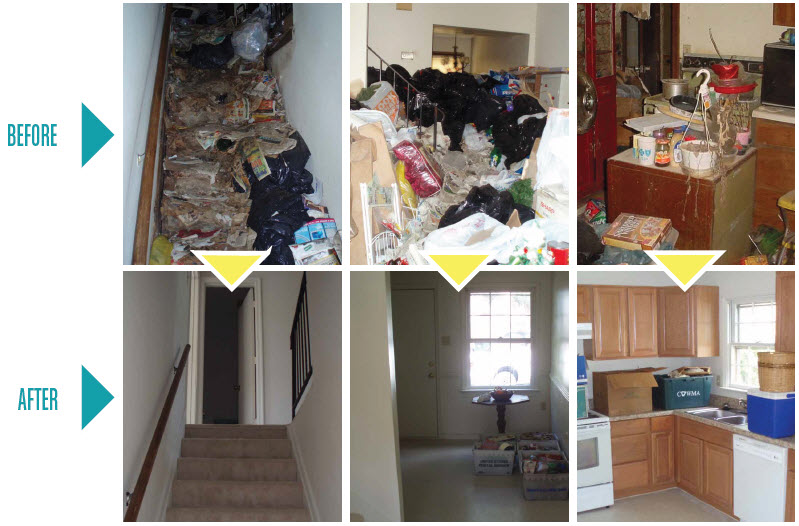
A hoarded environment can be a hazardous situation, with harmful pathogens and bacteria growing in every crevice and surface. If you know a hoarder ready to clean their home, consult a professional hoarding and estate cleaning company, like ServiceMaster Disaster Restoration and Recovery, that services hoarded and cluttered homes. Our trained specialists at ServiceMaster Disaster Restoration and Recovery are sensitive to the homeowner’s plight and carefully handle the situation with tact. Professionalism and experience give our technicians the edge when it comes to navigating the disorderly whirlwind of a home engulfed with hoarded goods or clutter. Our team compassionately works with the individual suffering from the hoarding issue, as well as a therapist or the family members to implement a cleaning plan. We also follow up with a phone call in the short-term to determine whether additional help is needed and if the home is maintained.
When dealing with a sensitive issue like a hoarding cleanup, call the most trusted name in professional cleaning, ServiceMaster Disaster Restoration and Recovery. We reliably serve the San Francisco, CA community every day of the year.

Steve VanDenBerg is the owner of ServiceMaster Disaster Restoration and Recovery. He has over 30 years of experience working within the restoration industry and successfully leading start-ups, turnarounds, acquisitions and mergers, and rapidly growing companies.
Steve earned his BS in Business & Accounting from Calvin University in Grand Rapids, MI and began working for DSI Holdings as their Chief Financial Officer. When Steve began with DSI Holdings, they were running an underperforming ServiceMaster Restore franchise with one location. Steve implemented new policies and procedures for accounting and finance as well as a professional sales plan that increased profits eightfold over his time as the CFO. He was then promoted to President and CEO and in this time, he expanded the company from two locations with $4M in sales to 12 locations and $45M in sales. DSI Holdings became one of the largest disaster restoration companies in the U.S. and helped with major restoration projects throughout the U.S. and around the world.
Steve purchased ServiceMaster DRR in 2015 when the business was in decline. Drawing on his years of experience in turning around struggling ServiceMaster franchises, Steve overhauled our operations, including finance, sales, and marketing, which led to a quick turnaround. Within Steve’s first 24 months, sales increased by 60 percent. Steve also helped greatly improve our operating margins and established a relationship with California’s largest residential insurance company. Under Steve’s leadership, we have become one of the largest disaster restoration providers in California.
Steve has found great success in turning around struggling and stagnant restoration franchises by changing the business model and strategy, greatly increasing sales and profits. Many of the changes he has implemented have even been adopted by the franchisor into their operating model.



